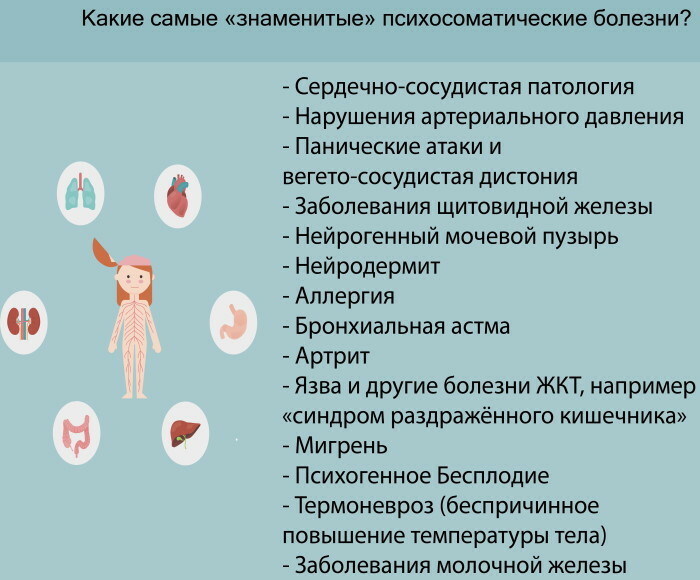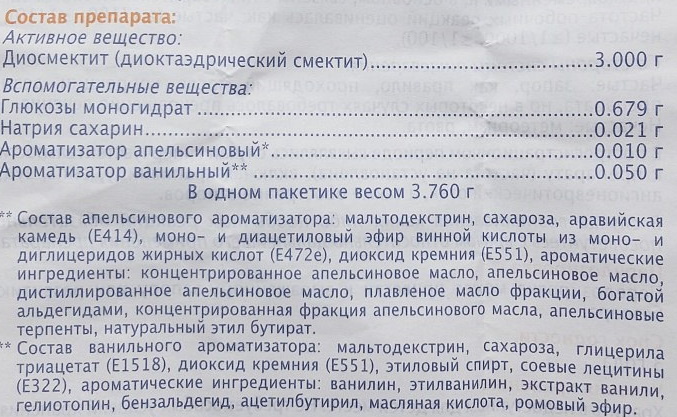Content
- Causes of CRHD development, predisposing factors
- Symptoms
- Diagnostics
- Treatment
- Drugs
- Physiotherapy
- Exercise therapy
- Surgery
- ethnoscience
- When is hospitalization needed
- Clinical guidelines for people with CRHD
- Video about rheumatic heart disease
CRHD (chronic rheumatoid heart disease) - a disease manifested by the presence of scars on the heart valves, which are the cause of the development of heart failure or vascular stenosis. CRHD is a complication of ARF (acute rheumatic fever - inflammation of the heart tissue caused by streptococcal infection). CRHD is dangerous by the development of death if left untreated.
Causes of CRHD development, predisposing factors
CRHD is not an independent disease, but a complication that develops as a result of the introduction of streptococcal infection into the tissue of the throat or pharynx. A feature of this infection is that it contains a protein similar to that of heart tissue (still a similar protein is found in joints, brain tissue, nervous system, and cells skin). As a result, the immune system perceives the listed organs as a "threat" and begins to attack them.
As a result of the attack, an inflammatory process develops in the tissues of the heart (this organ is more often "attacked" by the immune system). Due to the inflammatory response, scarring forms on the heart valves (inflammation predominantly affects the valves), which leads to to the loss of their elasticity, and as a result, the opening and closing of the valves is disrupted, which leads to a deterioration in blood flow through the heart.
As a result, the main reason for the development of CRHD is the lack of treatment or improper therapy for diseases caused by streptococcal infection. This group of diseases includes: scarlet fever, tonsillitis and pharyngitis.
The following risk factors can increase the likelihood of developing CRHD:
- genetic predisposition to the development of acute rheumatic fever;
- the type of streptococcus "penetrated" into the body (some types of streptococcal infection contain a protein that is as close as possible to a human);
- strong weakening of the immune system;
- regular hypothermia of the body;
- work in a large team;
- gender (the female sex is more susceptible to streptococcal infection);
- age. More often children from 5 to 15 years old are ill;
- alcohol, nicotine, or drug abuse;
- the presence of congenital abnormalities in the connective tissue;
- the presence of autoimmune diseases;
- living conditions of a person (overpopulation, low social status, poor sanitation in the region).
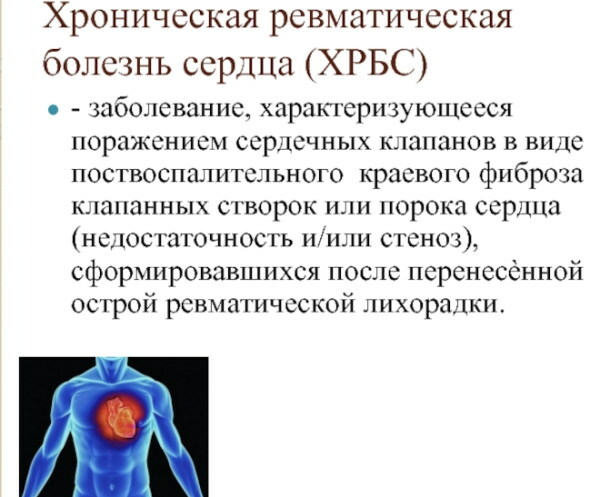
In addition to these factors, the risk group includes premature babies.
Symptoms
You can suspect the development of chronic rheumatoid heart disease if you have the following symptoms:
- the development of fever due to inflammation of the heart valves;
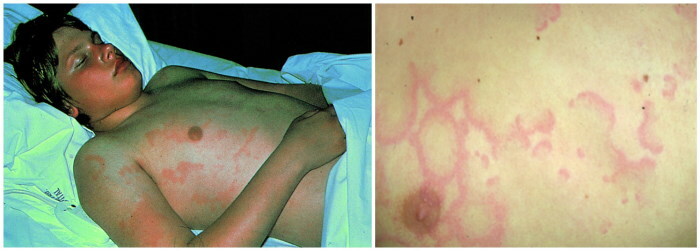
- the formation of rheumatoid nodules on the skin;
- worsening breathing when taking a horizontal position;
- attacks of suffocation at night;
- fainting or frequent fainting;
- permanent or temporary violation of cerebral circulation, due to deterioration of the heart;
- blue discoloration of the nasolabial triangle and cheeks;
- a feeling of heat on the cheeks;
- pallor or blue discoloration of the skin;
- dry cough, possibly a small amount of sputum with blood impurities;
- the liver increases in size, provoking the appearance of pain in the right hypochondrium;
- severe dizziness;
- constant fatigue, even in the absence of physical or mental stress;
- severe swelling, and redness of the legs and ankles;
- if the disease proceeds for a long time in children, then there is a lag in growth;
- sensitivity to weather changes;
- increased heart rate;
- increased pressure;
- throbbing sensation in the neck;
- accumulation of fluid in the abdominal cavity;
- the appearance of severe chest pains even at rest.
Important. Doctors recommend knowing the symptoms of not only CRHD, but also acute rheumatic fever, since the timely relief of pathology, will avoid the development of complications in the form of chronic rheumatoid heart disease.
The symptoms of ARF are:
- a rapid increase in temperature, which is fixed at around 38-39 degrees and is difficult to decrease;
- severe fatigue;
- severe aching in the joints, knees and hands often hurt;
- the appearance of migratory pain;
- swelling of the joints and limbs;
- the painful joints are swollen, the skin is red and hot. These signs are a symptom of the onset of the development of inflammation;
- pain in the region of the heart of varying severity;
- the development of shortness of breath due to circulatory disorders;
- a feeling of heartbeat, especially after exercise;
- an increase in the size of the heart, due to the development of inflammatory processes;
- the presence of a heart murmur;
- violation of the rhythm of heart contractions;
- the appearance of an annular rash;
- sudden and uncontrollable movements of the arms or legs;
- twitching of the muscles in the face;
- increased sweating;
- rapid weight loss;
- decreased or lack of appetite;
- a sharp change in mood.

The type of symptomatology changes as the disease progresses and on which organ "suffered" from streptococcal infection.
Diagnostics
CRHD is a dangerous disease, on the timely diagnosis of which the patient's life depends.
To confirm or deny the disease, the patient goes through the following stages of the examination:
- Patient interview, with the help of which the doctor determines the patient's propensity to the disease and the possible severity of the development of pathology. The survey can consist of the following questions:
- whether infectious pathologies affecting the throat and pharynx have recently been transferred. In what form did the disease proceed and what was the treatment;
- general well-being of the patient. That is, the presence of weakness, dizziness, chest pain;
- in what cases there is a deterioration in well-being (after physical exertion, at night);
- whether there are pains in the region of the heart and what is the degree of their severity;
- whether there is shortness of breath or cough. Does sputum come out when coughing and what is it;
- whether there are nocturnal attacks of suffocation;
- what symptoms and complaints the patient has;
- what medications the patient has taken or is taking;
- clarifies about recent weight loss;
- the presence of a predisposition to the development of CRHD.
- Examination of the patient. The item consists of stages:
- visual inspection. The doctor reveals the cyanosis of the nasolabial triangle, pallor of the skin;
- examines the joints for swelling and swelling;
- determines the presence of rheumatoid nodules on the skin;
- temperature, pressure and pulse are measured;
- taps the area of the liver, revealing an increase in the size of the organ;
- listening to the heart to detect murmurs.
- Delivery of analyzes. The patient can be assigned the following laboratory tests:
- delivery of a general blood test. The composition of the blood determines the presence of infection in the body (as well as whether an infectious disease has been transferred) and inflammatory processes;
- extended blood count. The method helps to better assess the general condition of the patient;
-
coagulogram of blood. The analysis allows you to determine the time of blood coagulation and eliminate the risk of thrombosis;

Blood coagulogram is normal - urine test. By the composition of urine, it is possible to assess the functioning of the kidneys and the presence of inflammation in the body.
- Instrumental examination. Hardware diagnostics include:
- echocardiography. The method consists in checking the condition of the heart valves using sound waves. To do this, the specialist fixes the sensor in the heart area, then the data is displayed on the screen. Using the image from the monitor, the doctor can determine: the severity of damage to the heart valves, impaired blood flow through valves (including reverse blood flow), as well as the presence of pathological fluid in the heart and an increase in the organ in sizes;
- electrocardiography. Assessment of the state and work of the heart is carried out by examining the electric fields that are formed during the work of the organ. For examination, the specialist attaches the sensors near the heart, on the wrists and ankles of the legs. Survey data are displayed graphically. According to them, the doctor determines the rhythm of the heart, the presence of damage to the heart muscle (for example, a recent heart attack);
- chest x-ray. With the help of X-rays, a picture of the internal organs is taken. According to it, a specialist can determine the size of the heart and the condition of the lung tissues;
- MRI of the heart. The device with the help of magnetic resonance records, in the form of images, changes in the electromagnetic field of the tissues of the body. Based on the images obtained, the doctor examines the degree of damage to the valves and blood vessels of the heart, and the heart muscle.
If a serious violation of the condition and work of cardiac tissues is detected, then cardiac catheterization may be prescribed. The procedure can be performed under general anesthesia. The method involves the use of a catheter, which is inserted through the carotid vein up to the heart.
Treatment
When diagnosing chronic rheumatic heart disease, the type of treatment is determined by the degree of severity of the disease. If the pathology is not started, then drug therapy is prescribed. In the case when the disease proceeds in an already advanced form, a specialist can send for an operation.
Drugs
CRHD, in the case of the functioning of the valves while maintaining normal blood flow in the organ, requires lifelong medication. If the disease is in remission, then the patient takes drugs on an outpatient basis (they support heart function and prevent the recurrence of acute rheumatic fever), in addition to treatment, it is required to observe diet.
In cases of repeated progression of ARF (provided that the disease has not yet had time to affect the activity of the heart valves), drug therapy is performed stationary, in addition, the patient must comply with bed rest and diet.
Depending on the general condition of the patient, the degree of damage to the heart valve, the doctor may prescribe drugs from the following groups:
| Groups of medicines | The purpose of their appointment | List of drugs |
| Angiotensin-converting enzyme inhibitors | Medicines are prescribed to prevent the development of heart and kidney failure. Depending on the prescribed dosage, drugs can also lower the blood pressure. |
|
| Beta blockers | The funds normalize blood pressure, increase the heart's tolerance to stress and reduce the likelihood of developing heart failure. |
|
| Cardiac glycosides | Herbal medicines that increase the endurance of the heart muscle and have antiarrhythmic and cardiological effects. |
|
| Calcium channel antagonists | The drugs have a vasodilating effect, helping to lower blood pressure. |
|
| Diuretics | Means eliminate puffiness, which is caused by a violation of the heart. |
|
| Antiarrhythmic drugs | Medicines restore rhythm and heart rate. |
|
| Antibiotics | The drugs destroy the bacterial infection. It is important that streptococcus be susceptible to the antibiotic of choice. |
|
| Anticoagulants | Medicines have a blood-thinning effect and prevent the development of thrombosis. |
|
| Cardiometabolic drugs | Medicines improve metabolism in the tissues of the heart, preventing the development of heart failure. |
|
| Antioxidants | The drugs protect the heart tissue from the harmful effects of decay products. |
|
| Non-steroidal anti-inflammatory drugs | The remedies eliminate inflammation, lower fever, and can also have an analgesic effect. The drugs help prevent further damage to the heart valves. |
|
| Glucocorticoids | Medicines have a pronounced anti-inflammatory effect when compared with non-steroidal anti-inflammatory drugs. |
|

The exact selection of medicines, as well as the duration of the course of using the drugs, is selected individually for each patient. It is strictly forbidden to adjust the treatment on your own (changing the dose, replacing the medication with analogues), as this can lead to the progression of the disease and even death.
Important. Medical treatment will not allow for complete recovery, but the use of drugs can prevent ARF from reoccurring, as well as maintain normal heart function.
Physiotherapy
Physiotherapy in CRHD (both with drug treatment and in the postoperative period) allows you to normalize and maintain the work of the heart valves. The method stands out for the absence of side effects and proven effectiveness.
In chronic rheumatic heart disease, the following may be prescribed:
- impact on heart tissue with low voltage currents;
- use of an electromagnetic field;
- the use of ultrasound;
- the use of thermal and ultraviolet procedures and other methods.
The type of physiotherapy treatment and the duration of the course are selected by the treating specialist individually.
Important. To achieve the result, it is necessary to complete the full course of the prescribed procedures, a one-time FTL will not give a result.
Exercise therapy
Physiotherapy exercises keep all the muscles of the body in good shape, including the heart. In this case, a set of exercises (which can gradually become more complicated) is selected by a specialist. The first exercise therapy classes are carried out strictly in the clinic under the supervision of a doctor. Subsequent sessions can be carried out at home, but you cannot independently change the program prescribed by the doctor.
Surgery
CRHD in its advanced form (mainly in cases where the heart valve is unable to maintain normal blood flow in the organ) is amenable only to surgical therapy. The advantage of the method is the complete restoration of the organ function. Surgical intervention is prescribed when the valve has completely lost its elasticity or the vessel in the heart is narrowed so much that blood flow through it is almost impossible.
During surgery, the doctor replaces or replaces the valve. And if there is a pathology in the vessel (stenosis), then a stand is installed, as a result, the blood flow is restored.
Important. After the operation, the patient is also prescribed lifelong drug treatment, the goal is to maintain the required blood clotting and prevent the development of thromboembolism. In addition, the patient must follow a diet, undergo physiotherapy and exercise therapy.
ethnoscience
Alternative methods can be combined with drug therapy or during the recovery period after surgery. In this case, it is required to take into account that the selected recipes for folk remedies must be discussed with the attending physician. With CRHD, tinctures (not alcoholic ones) are more often used: hawthorn, motherwort, calendula.
When is hospitalization needed
Hospitalization for CRHD diagnosis can be emergency or planned.
List of indications for hospitalization of the patient:
| Hospitalization type | List of indications |
| Emergency |
|
| Planned |
|
If the indications for hospitalization are ignored (as well as in the absence of treatment), the following complications may develop:
- heart failure;
- stroke;
- severe arrhythmia;
- bacterial damage to the valves of the heart;
- separation of a blood clot with subsequent blockage of the vessel.
In the absence of timely medical care, complications can be fatal.
Clinical guidelines for people with CRHD
CRHD is a dangerous disease that can result in disability or death. In this case, the disease is easier to prevent, since it is impossible to completely eliminate it.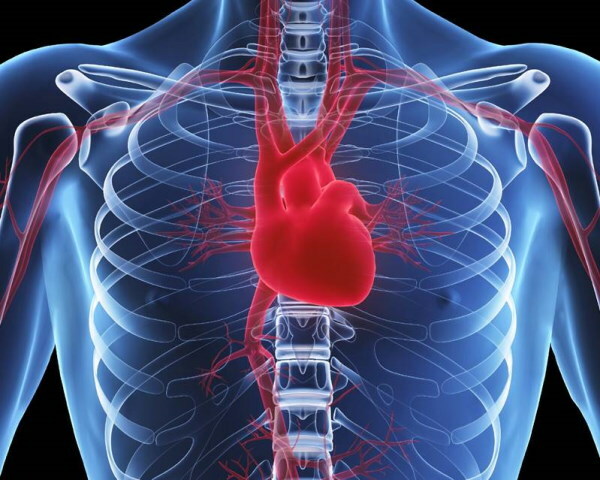
To avoid the development of chronic rheumatoid heart disease, the following preventive measures are required:
- adherence to treatment for the development of angina, scarlet fever and other diseases of the throat / pharynx caused by streptococcal infection;
- timely strengthening of immunity, with its weakening;
- maintaining a healthy lifestyle (physical activity, walking in the fresh air and a complete rejection of bad habits).
In the case of diagnosing chronic rheumatoid heart disease, in order to avoid the recurrence of ARF, it is required:
- strict adherence to therapy prescribed by a doctor;
- adhere to a dietary diet;
- undergo an annual full examination in order to timely change the state of the heart tissues.
- timely drink antibiotics (they can be prescribed, even in the absence of infection in the body).
In addition, it is important to observe good nutrition and take magnesium containing vitamins (magnesium strengthens the heart tissue), especially if there are provoking factors for the development of the disease.
CRHD is more often diagnosed in children aged 5 to 15 years. If the child has provoking factors, experts recommend strictly adhering to preventive measures, since if the pathology begins to develop, then eliminate it completely impossible. As a result, the child will become disabled for life, and in the worst case, death is possible.
Author: Kotlyachkova Svetlana
Video about rheumatic heart disease
Rheumatic fever and heart disease:


